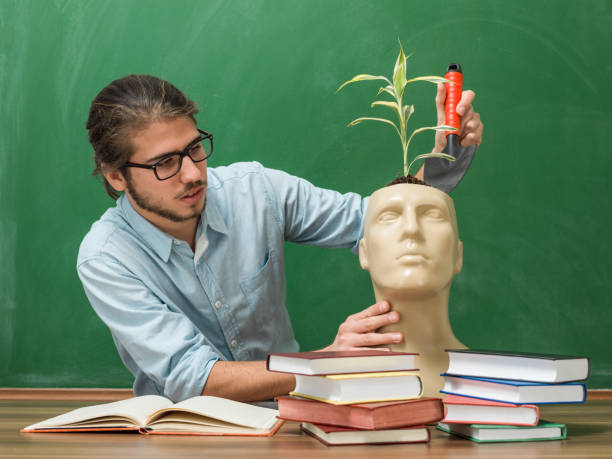In today’s fast-paced and information-rich world, curiosity and creativity are no longer optional skills—they are essential to success. Educators around the globe are recognizing that the ability to ask questions, think critically, and generate innovative ideas matters as much as memorizing facts. Chris Bressi, an education advocate and thought leader, has long emphasized the importance of nurturing curiosity and creativity in the classroom. Through his unique approach, he encourages both teachers and students to see learning not as a chore, but as an exciting journey of exploration.
The Changing Landscape of Education
Modern education has evolved beyond traditional textbooks and rote learning. Students are no longer passive recipients of information—they are active participants in the learning process. The rapid integration of technology has transformed classrooms into interactive, collaborative environments where students can explore real-world problems and find creative solutions.
Chris Bressi believes that education should adapt to the needs of this new generation. In his view, curiosity fuels engagement and creativity fuels innovation. When schools focus solely on standardized testing or fixed curricula, they risk suppressing these natural drives. By contrast, environments that encourage exploration allow students to take ownership of their learning and discover how knowledge connects to the world around them.
The Power of Curiosity in Learning
Curiosity is the spark that ignites lifelong learning. It pushes students to ask “why,” “how,” and “what if.” According to Bressi, when educators design lessons that inspire wonder, they tap into a student’s intrinsic motivation. This motivation is far more powerful than external rewards like grades or praise.
For example, instead of simply teaching historical dates, teachers might encourage students to investigate what life was like for people living during that period. In science, students might design their own experiments to test hypotheses rather than following pre-set instructions. In every subject, curiosity-driven activities help students connect emotionally with what they’re learning.
Bressi often emphasizes that curiosity should be seen as a skill that can be cultivated. Teachers can do this by asking open-ended questions, allowing space for discussion, and showing genuine enthusiasm for discovery. When students feel that their questions are valued, they are more likely to continue asking them.
Creativity: The Heart of Problem-Solving
While curiosity drives the desire to learn, creativity provides the tools to apply that knowledge in unique ways. Chris Bressi describes creativity as “the bridge between imagination and action.” In his approach, creativity is not limited to the arts—it’s a mindset that can enhance every field, from mathematics to engineering to social studies.
Encouraging creativity means giving students permission to take risks, make mistakes, and view challenges as opportunities. When a classroom fosters psychological safety, students feel confident experimenting with new ideas without fear of failure. This environment mirrors the real world, where innovation often arises from trial and error.
Bressi advocates for project-based learning, where students collaborate to design solutions to real-world problems. These projects not only strengthen creative thinking but also teach teamwork, communication, and critical analysis. For instance, students might create a community garden to study sustainability, or develop a mobile app to help their peers organize study schedules. Such projects bring abstract lessons to life while sharpening creative and problem-solving skills.
Integrating Curiosity and Creativity in Teaching
To successfully integrate curiosity and creativity into the curriculum, teachers need both support and flexibility. Chris Bressi encourages educators to adopt an inquiry-based approach, where lessons begin with questions rather than answers. This method transforms students from passive learners into active explorers.
Teachers can also use technology to fuel creativity. Digital storytelling, interactive simulations, and virtual reality experiences allow students to visualize complex ideas in new ways. Bressi highlights that technology should not replace teachers—it should empower them to create richer, more engaging learning experiences.
Another key aspect of his philosophy is cross-disciplinary learning. Traditional education often isolates subjects into separate silos. But in the real world, knowledge is interconnected. Bressi suggests blending subjects—for example, combining art and science through design thinking projects or linking literature with social studies to analyze cultural narratives. This integration mirrors how creativity and curiosity operate in everyday problem-solving.
The Role of Teachers as Mentors and Guides
Chris Bressi views teachers not merely as instructors, but as mentors who guide students through the process of exploration. When teachers model curiosity themselves—by asking questions, sharing their thought processes, or admitting when they don’t know something—they demonstrate that learning is a continuous journey.
Mentorship also involves recognizing each student’s unique strengths and learning styles. A curious student may love research and inquiry, while a creative one may prefer designing visual or hands-on projects. By giving students choice in how they learn and express understanding, teachers foster autonomy and confidence.
Bressi also encourages educators to celebrate small successes. Recognizing creative efforts, even when they don’t produce perfect results, reinforces the idea that innovation requires persistence. When students feel their creativity is valued, they develop the courage to keep experimenting.
Building a Culture of Curiosity and Creativity
Schools that truly value curiosity and creativity extend those principles beyond the classroom. Bressi advocates for a school-wide culture where questioning, experimentation, and collaboration are part of everyday interactions.
Leaders can promote this culture by encouraging professional development focused on innovative teaching methods. Teachers can form peer learning communities where they share ideas, reflect on challenges, and experiment with new approaches. Parents can also play a role by nurturing curiosity at home—through conversations, exploration, and positive reinforcement.
Extracurricular programs such as robotics clubs, art workshops, and entrepreneurship competitions provide additional opportunities for creative growth. According to Bressi, these experiences help students see how curiosity and creativity connect to real-world success.
Overcoming Barriers to Creative Learning
Despite the proven benefits, many educators face challenges in implementing curiosity-driven learning. Time constraints, testing pressures, and rigid curricula can make it difficult to prioritize creativity. Bressi acknowledges these obstacles but argues that small changes can make a big difference.
Teachers can begin by dedicating just a few minutes of each class to curiosity questions—asking students what they wonder about the topic at hand. They can design projects that align with existing standards but leave room for choice and creativity. Administrators can support these efforts by allowing more flexibility in lesson planning and assessment.
Ultimately, fostering creativity and curiosity doesn’t require a complete overhaul of the education system—it requires a shift in mindset. When educators see themselves as facilitators of discovery rather than deliverers of information, the classroom transforms into a space of possibility.
The Future of Education According to Chris Bressi
Chris Bressi envisions a future where education is not about conformity, but about cultivating potential. He believes that the most successful schools will be those that encourage curiosity, creativity, and compassion equally.
In this vision, students are not trained merely to pass exams, but to think independently and contribute meaningfully to society. They will grow into adults who question assumptions, explore solutions, and innovate fearlessly.
Bressi’s message is clear: curiosity and creativity are not luxuries—they are the foundation of progress. When schools commit to nurturing these qualities, they prepare students not just for careers, but for life itself.
Conclusion
Chris Bressi’s approach to education reminds us that curiosity and creativity are the true engines of learning. By fostering these traits, teachers can ignite passion, deepen understanding, and prepare students for a world that thrives on innovation. As education continues to evolve, his philosophy offers a roadmap for creating classrooms filled with inspiration, imagination, and endless potential.




